#Knap of Howar
Text
Would you like to see what is likely the oldest existing house on Earth?
Here it is:
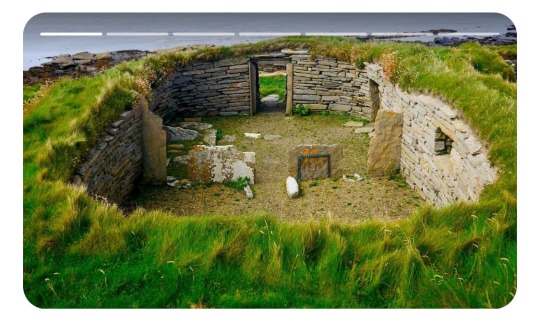
It’s called the Knap of Howar, and I am in love with it. It’s in Orkney, Scotland, and it’s over 5,000 years old. It was preserved by the soil around it. The name “Knap of Howar” is absolutely fantastic, and it has a fireplace, shelves, and a bed, and may have had a front porch, because humans are always basically humans no matter how much time may pass.
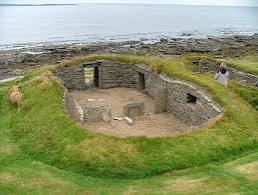
442 notes
·
View notes
Text
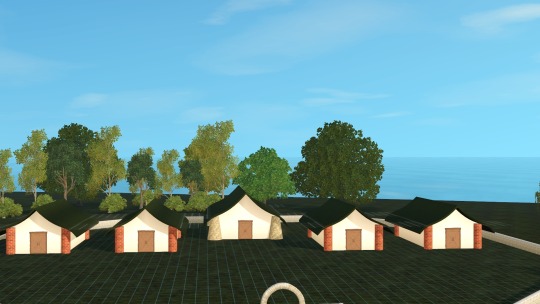
I revised the village just a bit, and I think it looks more homey now. The internal layout is going to be similar to the Knap o' Howar site in Orkney, with a front living area and a back kitchen/working area. And there's also going to be "workshops" between each of the two houses at the front. I'm still torn on whether I should put cows and crops inside the fence, or simply purchase another lot and have them do their agricultural stuff there.
8 notes
·
View notes
Text
Places Left Behind
They picked me from the ground
And treated me with care
They lived and passed me down
They died and built their cairn.
Ustan is my name now
Though they named me something else
They called me their word for bowl
I held in my curves their piles of shells
from mealtimes of salty meat.
They taught their crafts to their sons
Generations dwelt within me
Then they left me, and there was bronze.
The Beaker, my daughter
I was proud she went her own way
The Orcadian Celts, my neighbour
I took some rest, far away.
I slept through iron, slept through Picts
Slept through Norse and slept through Rome
I slept through all the bloody conflict
Rocked by gentle sea foam.
Time buries me into a mound
The roof long fell and rotten
Cities in the mainland full of sound
Soon I will be unforgotten.
I’m in Orkney now, and they’re the Scots
They named my bedchamber the Knap of Howar
They dug and found the shattered pots
The past gives them a fervent power.
They picked me from the ground
And treated me with care
They’ll live and pass me down
They’ll die, but the past will be repaired.
2 notes
·
View notes
Text
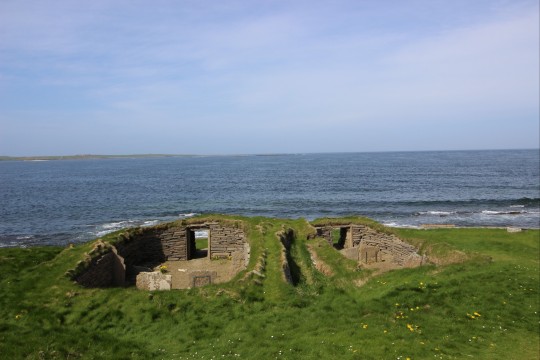
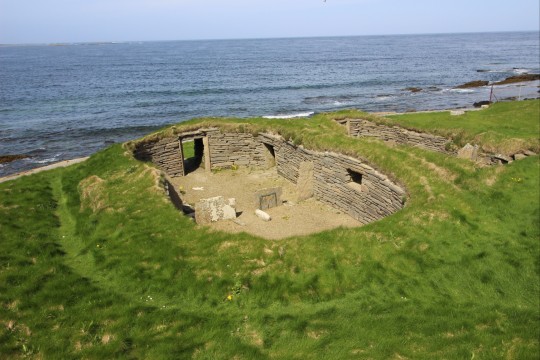
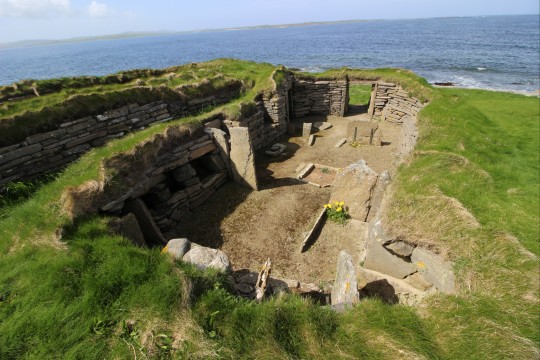
the knap of howar, a house from more than 5000 years ago. it didnt use to be so close to the coastline, when it was built. they used to grow grains, and keep livestock, and be human.
2 notes
·
View notes
Photo
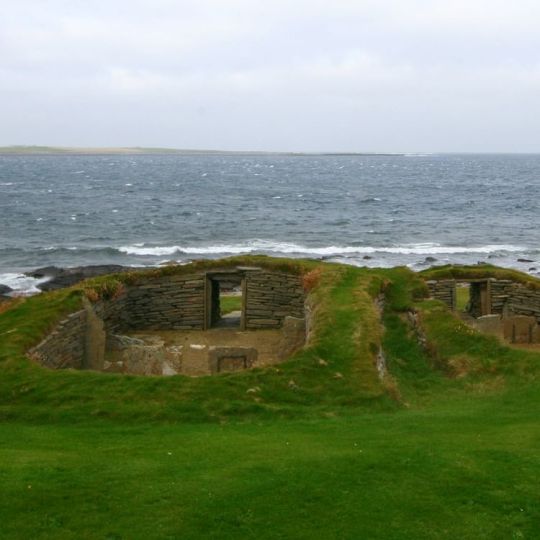
Knap of Howar
Le Knap of Howar est un site néolithique sur l'île de Papa Westray dans les Orcades, en Écosse. Son nom signifie en vieux norrois "monticule de monticules" ou "grand tertre". Le bâtiment conservé sur le site est considéré comme la plus ancienne maison en pierre d'Europe du Nord et est daté de 3700-3500 avant notre ère. Le site se compose de deux structures, communément appelées "la ferme", construites en pierre sèche et séparées par un passage attenant. D'après les fouilles archéologiques, on pense que ces structures furent construites sur un site beaucoup plus ancien et constituaient le centre d'un établissement agricole.
Lire la suite...
3 notes
·
View notes
Text
Historic site of the week: The Knap of Howar
Knap of Howar on the island of Papa Westray in Orkney, Scotland is a Neolithic farmstead which may be the oldest preserved stone house in northern Europe. Radiocarbon dating shows that it was occupied from 3700 BC to 2800 BC.
0 notes
Photo
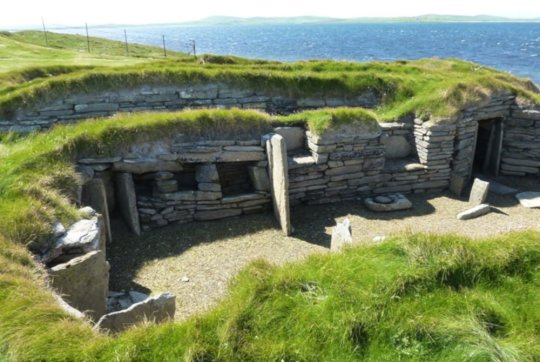
Knap of Howar
The Knap or Howar is a Neolithic settlement located on the west coast of Papa Westray, one of Scotland’s Orkney Islands.
Read more at: https://paganplaces.com/places/knap-of-howar/
0 notes
Text
The Oldest Buildings in the World

23 Oldest Buildings in the World
Each of them is a unique structure, one of the oldest witnesses of world history, a magnificent piece of the legacy left by mankind to this world centuries ago...
The oldest buildings in the world, determined by radiocarbon dating, have a mystery and splendor that is definitely worth the attention of history lovers.
We have examined different routes from the list of the oldest buildings in the world, which are determined by considering the approximate age, purpose of use, length, and durability of the structures.
Barnenez (4850 BC), France

According to archaeological research, the oldest building in the world is Barnenez, dating back to 4850 BC.
Located north of the French settlement of Finistère, it is 72 meters long and 25 meters wide. The building is said to be over 8 meters high,
This relic from the depths of history is believed to be a mausoleum. The robustness and width of the structure support the idea that it may have belonged to an influential political or spiritual leader from the tribal period.
Monte d'Accoddi (4000 BC), Italy
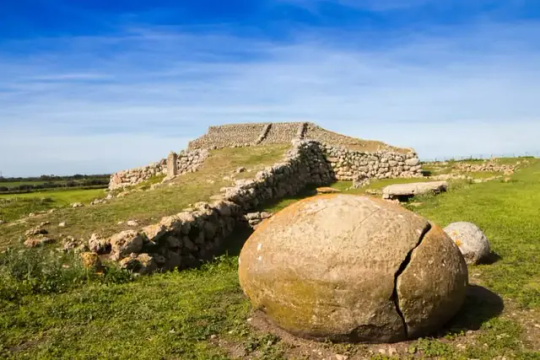
The oldest in Italy is Monte d'Accoddi, dating back to 4000 BC.
It is considered by experts to be an open-air temple. The structure, which includes a 10-meter-long stepped pyramid, allows you to feel the Mesopotamian culture while in Italy.
The temple, which has a Neolithic texture, is one of the must-see places on Sardinia Island.
Monte d'Accoddi is the oldest living combination of stone and earth.
Restored in 1980, the building is now open to the public.
Knap of Howar (3700 BC), Scotland

This structure in northwestern Europe is a stone house dating back to 3700 BC. Knap of Howar is the oldest and best-preserved example of its kind.
Located on Papa Island in Scotland, the house also draws attention with its seafront location. The view where stone walls and waves meet on the same stage is definitely worth watching.
Archaeological studies show that in the past, fishing was practiced here, fires were lit, small cattle were kept, and provisions were stored in large rooms.
Ġgantija (3700 BC), Malta

This temple, which is older than the Egyptian Pyramids, is one of the oldest religious sites in the world.
Located on the island of Malta, Igantija, which means "Temple of the Giants" in the local language, is a building dating back to 3700 BC, according to dating studies.
According to legend, this is the home of a giant that feeds only on honey.
This ancient place of worship, which is also an example of megalithic architecture, is a UNESCO World Heritage Site.
Listoghil (3550 BC), Ireland

Listoghil, located in the region called Carrowmore in Ireland, is a giant monument consisting of ancient tombs from the prehistoric period.
This ancient passage, estimated to have been built in 3550 BC, is located 3 km from the town of Sligo, 59 meters above sea level.
If you ever have the chance to visit Ireland, you should definitely see the ancient finds that are spread all around Listoghil.
Sechin Bajo (3500 BC), Peru

For those who want to turn their route to the American continent, the oldest building in South America is in Peru.
Sechin Bajo is an archaeological site made entirely of stone and still standing strong.
Located 330 km northwest of Lima, this stone land is one of the oldest civilized settlements and one of the oldest surviving artifacts of mankind.
According to carbon dating, the year of construction is 3500 BC.
La Hougue Bie (3500 BC), Jersey Island

The island of Jersey, one of the Channel Islands in the north of France, is home to an artifact dating back to 3500 BC and the museum of the same name.
The 18.6-meter-long La Hougue Bie is one of the most attractive tourist spots on the island, which is part of the United Kingdom.
6000 years ago, you can examine the remains of the Neolithic Jersey people who lived here in detail in the museum.
The museum, which is closed in January, opens every year on February 10 and can be visited until 16.00 in winter and 17.00 in summer.
Wayland's Smithy (3460 BC), England

This neolithic structure near Ashbury in England is actually a burial chamber.
The Wayland tumulus, which contains 14 skeletons, is estimated to have been built in 3460 BC. According to the estimates, the rebels of the period who opposed the government may have been tortured and killed here.
It is rumored that with the change of power over time, this pit was turned into a mausoleum and visited by the public.
Shahr-e Sukhteh (3200 BC), Iran
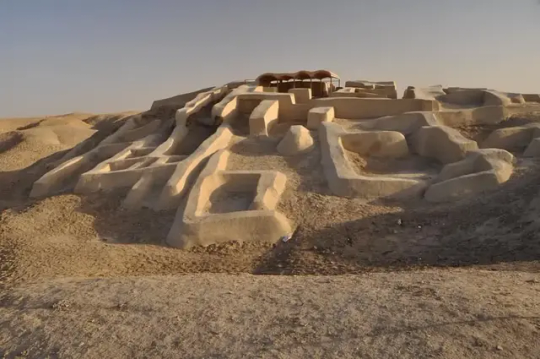
It is an archaeological site that has been a UNESCO World Heritage Site since 2014.
Located in southeastern Iran, this ancient site is thought to contain between 25,000 and 40,000 tombs.
To better understand the prehistoric structures of the Persians, it is worthwhile to breathe the mystical air of Mesopotamia here.
Hulbjerg Jættestue (3000 BC), Denmark
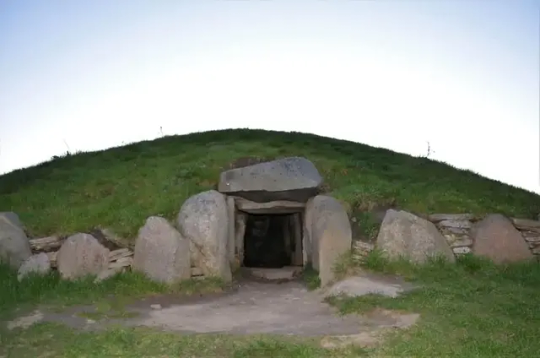
On the Danish island of Langeland, prehistoric times come to life again thanks to an ancient tomb.
The Hulbjerg Jættestue settlement, 2.5 km from Bagenkop, is thought to date back to 3000 BC.
The 1960 archaeological excavations here are very important as they shed light on European civilization.
When the 53 skeletons found here were analyzed, the first examples of dentistry as we know it today were unearthed. The holes and fillings in the teeth of the skeletons are still on display at the Langeland Museum.
Pyramid of Djoser (2700 BC), Egypt

The Pyramid of Djoser is just one part of this majestic piece of history.
Built by man from stone and still a mystery, these majestic giant structures date back to 2700 BC.
There are also tombs in Egypt, such as the Meidum Pyramid, Bent Pyramid, and the Red Pyramid, each with different architectural features.
The Great Pyramids of Giza, which are also located here, have recently become the center of attention with the large cavity discovered inside them. It is thought that this cavity, the size of a passenger plane, will help to solve the secret of the construction of the pyramids.
Harappa (2600 BC), Pakistan

Although it sounds like a ruin in Pakistani, this is one of the oldest cradles of civilization.
The ancient settlement, estimated to date back to 2600 BC, is located in Punjab, Pakistan.
Two kilometers away from the ancient city, life still continues in a village of 15 thousand of inhabitants.
Although the ancient city has suffered a lot of damage over the years, it was taken under the roof of the relevant ministry in 2005 and underwent a comprehensive restoration.
Dholavira (2450 BC), India

Welcome to India with its mystical air and spice scents!
Make your way to the city of Dholavira, dating back to 2450 BC, and say hello to the oldest example of urban planning.
Everything from sewers to clean water channels, from inscribed stones to burial sites, points to the fact that civilization existed long before us.
Ziggurat of Ur (2100 BC), Iraq
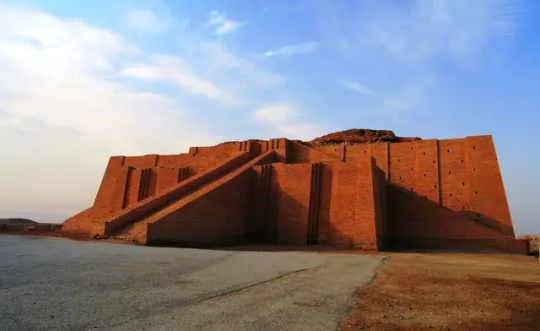
The Great Ziggurat of Ur, a monument dating back to 2100 BC, is located in Nasiriyah, Iraq.
Built by King Ur-Nammu during the Sumerian period, this durable temple was dedicated to the gods.
It is known that the temple underwent its first restoration in the 1940s.
During the reign of Saddam Hussein, it was overhauled in such a way that this work was truly included in the world heritage.
Dolmen de Viera (2000 BC), Spain

Dolmen is a generic name for stone-age tombs, and there are many skeletons around this address in Spain.
Dating back to 2000 BC, this monument and other nearby tombs were discovered between 1903 and 1905 by brothers Antonio and Jose Viera.
Named after its discoverers, the structure has a long corridor, and the burial chamber consists of 27 giant stones.
Knossos (2000 BC), Greece

Knossos in Greece is the center of both ceremonies and politics in the Cretan region.
Knossos, which was the capital of the Minoan civilization in 2000 BC, is said to have hosted up to 18 thousand people.
The home of the legendary King Minos, the leader of Crete, is a unique structure that has survived to this day.
The King's Grave (1000 BC), Sweden

Europe again, and this time a mausoleum on the coldest side of the continent...
The King's Grave is located in Kivik, southeast Sweden.
During the excavations in the 75-meter-long tomb from the Bronze Age, many symbols of the kingdom were found, as well as many other details from animals to ships.
Cuicuilco Circular Pyramid (800-600 BC), Mexico

Although the concept of pyramids is associated with Ancient Egypt, these majestic structures can also be found in Mexico.
Thought to have been built in stages between 800 and 600 BC, the structure is also one of the first works in which the solar calendar was used for the first time.
Cuicuilco, which can be visited as an archaeological site today, is the right address for those who wonder how Mesoamerican civilizations were born.
Thracian Tomb of Kazanlak (300 BC), Bulgaria

As we approach the ages of history, another monumental tomb dating back to 300 BC is being added to the list from Bulgaria, the structure has also been inscribed on the UNESCO World Heritage List.
Classically, it consists of a narrow corridor and a round burial chamber.
The walls are decorated with details of Thracian civilization. These drawings are considered to be the most valuable works of art from the Hellenistic period in Bulgaria.
Mausoleum of the First Qin Emperor (246-208 BC), China

The construction started in 246 BC and lasted until 208 BC, making it one of the largest mausoleums known.
The 76-meter-long structure, which houses the body of Chinese Emperor Qin Shi Huang, was built with the logic of a pyramid.
The mystery of this place lies in the Terra Cotta Army on its borders. A stone soldier, first discovered by a villager in 1920, has unearthed an earthen army of life-size soldiers and horses.
How these sculptures were made with the means of the time and how they could all have such unique details is still a matter of curiosity for those interested in archaeology.
Ruwanwelisaya (140 BC), Sri Lanka

Before leaving the borders of Asia, the Ruwanwelisaya building in Sri Lanka is also noteworthy.
This domed temple is also referred to as a stupa.
Items believed to be sacred are kept inside the building, which dates back to 140 BC.
In addition to tourists, thousands of Buddhists travel to Sri Lanka every year to visit this temple.
Lei Cheng Uk Han Tomb Museum(25 BC), Hong Kong
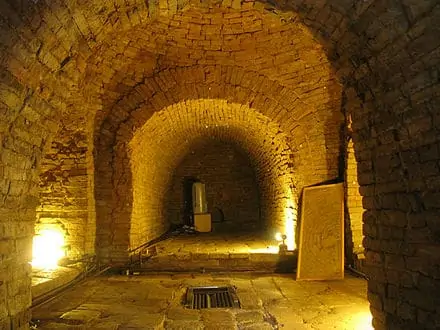
Dating back to 25 BC, this mausoleum is the oldest historical building in Hong Kong.
It attracts the attention of tourists with its interesting spiral-shaped architecture.
Another feature of the building is that the artifacts found here are exhibited in a very modern museum.
Colosseum (80-72 BC), Italy

Even it is not the oldest on the list, it is the most touristic and the one that attracts the most attention. The Colosseum in Italy is one of the most visited foreign spots by tourists.
The Colosseum, an amphitheater built by slaves and prisoners between 80-72 BC, still exists today.
The venue, which had 80 entrance and exit gates and a capacity of 50 thousand spectators, is especially known for hosting gladiator shows.
Read the full article
1 note
·
View note
Photo

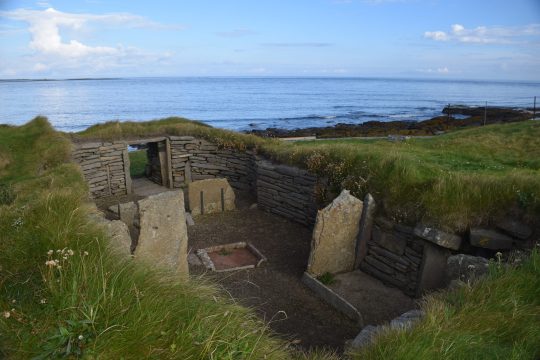
knap of howar is a neolithic site on the island of papa westray in orkney, scotland. the structures were built in the early neolithic, around 3700 to 3500 bce, by a family of farmers. the buildings were continually inhabited for 900 years following their construction.
the site consists of two rounded rectangular buildings, one larger and one smaller, with a little passageway connecting the two. the bigger of the two served as the living quarters and the smaller home as a workshop or a storage space. fireplaces, beds, partitions, and storage shelves are all in good condition within the structure.
#.chatter#collected#history#ancient scotland#scotland#knap of howar#prehistoric#neolithic#SEE!!!!! god i love stone structures. i would love to live in this albeit probs gets p damn cold
117 notes
·
View notes
Photo
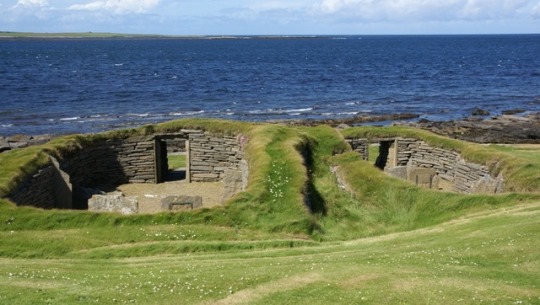
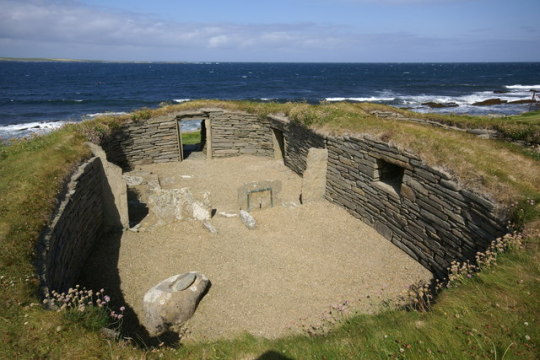
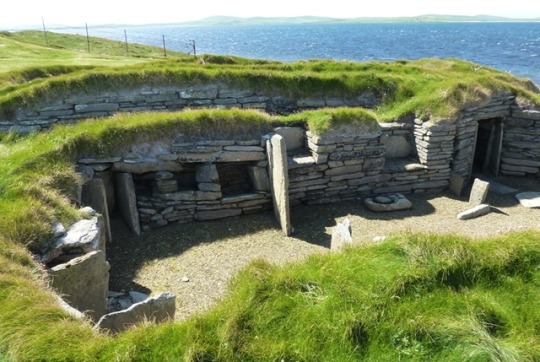
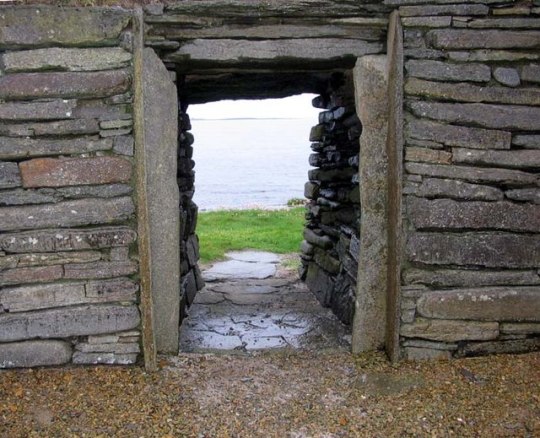

Knap of Howar, Orkney Islands, Scotland
The Knap of Howar on the island of Papa Westray is a Neolithic farmstead which may be the oldest preserved stone house in northern Europe. Radiocarbon dating shows that it was occupied from 3700 BC to 2800 BC, earlier than the similar houses in the settlement at Skara Brae on the Orkney Mainland.The farmstead consists of two adjacent rounded rectangular thick-walled buildings with very low doorways facing the sea. The larger and older structure is linked by a low passageway to the other building, which has been interpreted as a workshop or a second house. Though they now stand close to the shore, they would have originally lain inland. The stone furniture is intact giving a vivid impression of life in the house. Items found in middens (refuse heaps) show that the inhabitants were keeping cattle, sheep and pigs, cultivating barley and wheat and gathering shellfish as well as fishing for species which have to be line caught using boats. Finds of finely-made and decorated Unstan ware pottery link the inhabitants to chambered cairn tombs nearby and to sites far afield including Balbridie and Eilean Domhnuill. The name Howar is believed to be derived from Old Norse word haugr meaning mounds or barrows.
#history#neolithic#scotland#ruins#orkney#knap of howar#papa westray#ancient#coastal#uk#3rd millennium bc#4th millennium bc
2K notes
·
View notes
Text
no more cottagecore, Knap of Howar-core only, I will disappear into the Orkneys and live in a Neolithic stone house until I inevitably freeze to death
117 notes
·
View notes
Photo
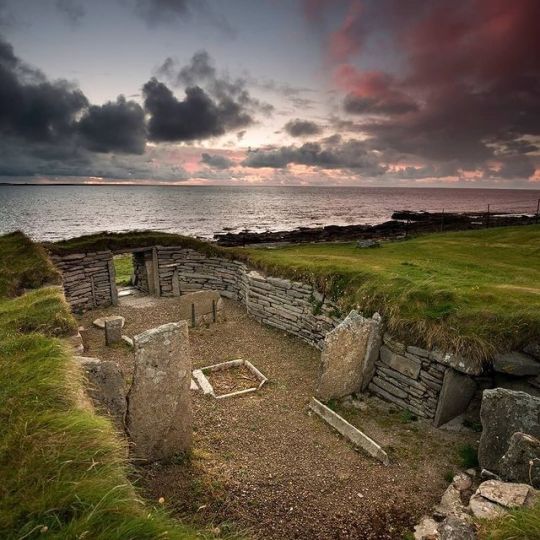
scotland.shots
Knap of Howar, Papa Westray, Orkney, Scotland
3 notes
·
View notes
Photo






HISTROY OF ARCHITECTURE
PREHISTORIC ARCHITECTURE:
“Drawing is still basically the same as it has been since prehistoric times. It brings together man and the world. It lives through magic.”
― Keith Haring
Early human settlements were mostly rural. Expending economies resulted in the creation of urban areas which in some cases grew and evolved very rapidly, such as that of Çatal Höyük in Anatolia and Mohenjo Daro of the Indus Valley Civilization in modern-day Pakistan.
Neolithic settlements and "cities" include Göbekli Tepe and Çatalhöyük in Turkey, Jericho in the Levant, Mehrgarh in Pakistan, Knap of Howar and Skara Brae, Orkney Islands, Scotland, and the Cucuteni-Trypillian culture settlements in Romania, Moldova and Ukraine.
#history#architecture#history of architecture#stonehenge#catal hoyuk#mohenjo daro#gobeklitepe#moaistatue
7 notes
·
View notes
Text
youtube
Sacred Geometry in Neolithic Orkney | Origins of Metrology and Geometry at the Knap of Howar
Published on Feb 28, 2020
Join Megalithomania and guest host Nicholas Cope on the 'Megalithic Origins of Orkney Tour' August 15th - 22nd 2020: http://www.megalithomania.co.uk/orkne....
In this video Hugh Newman explores the 5,700 year old Knap of Howar on Papa Westray, Orkney. It consists of two stone 'houses' similar to the later Skara Brae, and showS sophisticated geometry, encodeS the megalithic yard and the golden section, and may be where many of the ideas for the megalithic stone circle building culture originated. Featuring the work of author Nicholas Cope who wrote 'The Knap of Howar and the Origins of Geometry', the video explores the site thoroughly and includes exclusive aerial footage.
Also, the flight here from mainland Orkney is the world's shortest flight (that we include on the tour in August!)
3 notes
·
View notes
Photo
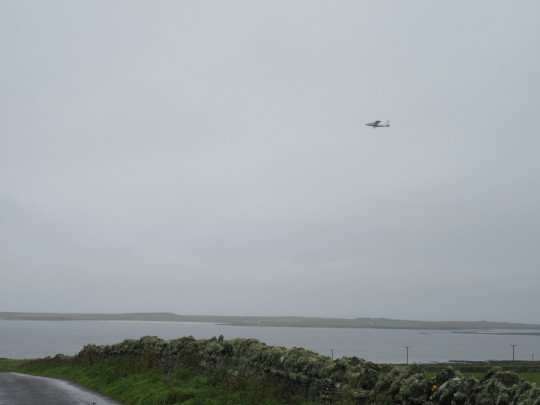

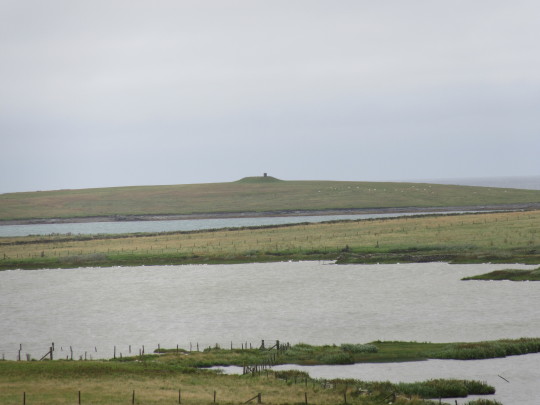
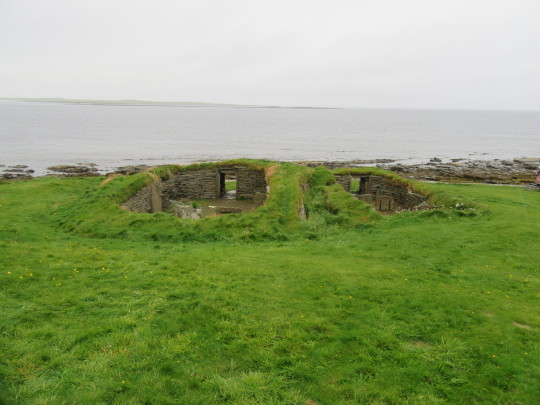
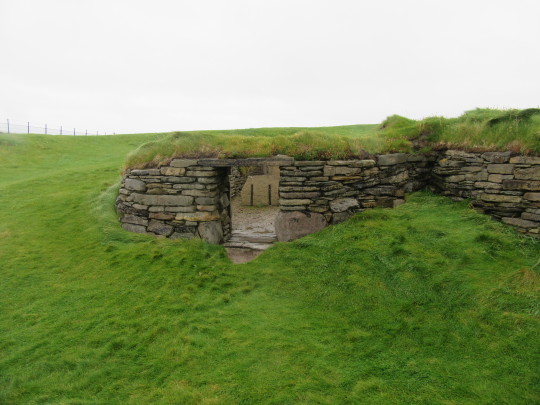

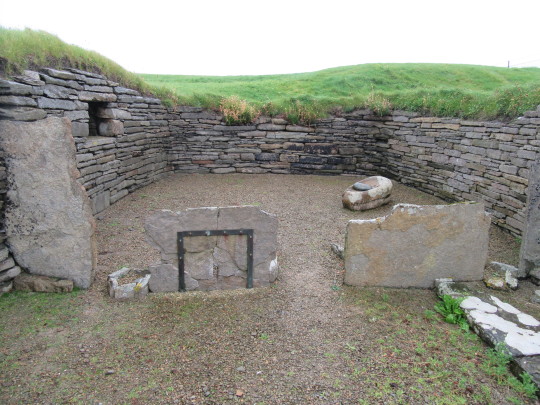
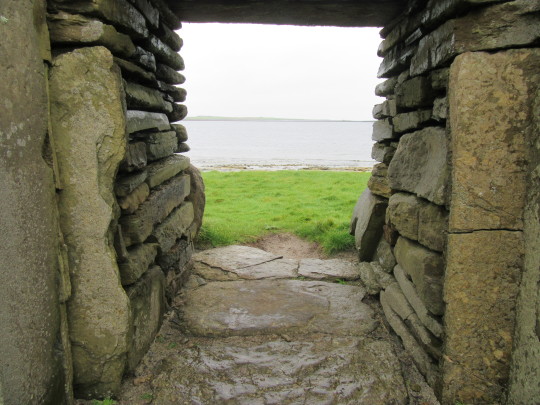
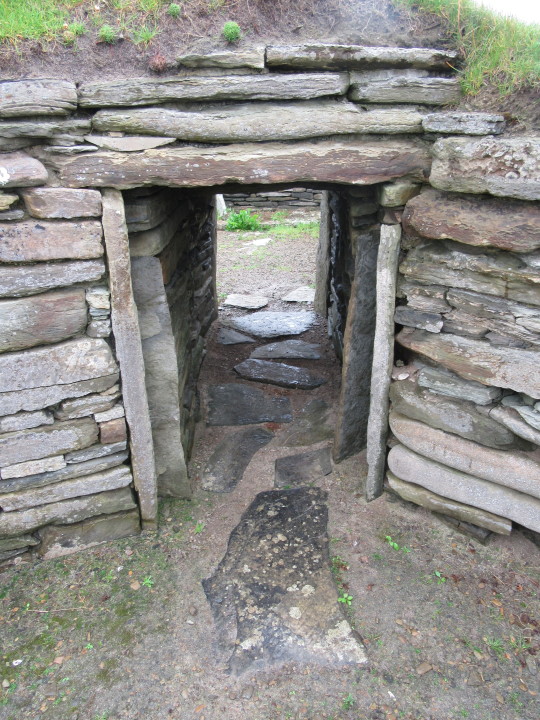
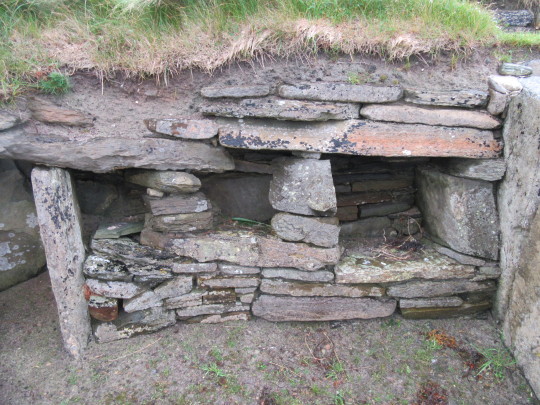
Knap of Howar, Papa Westray, Orkney, Scotland
Previous
Since I was already on Orkney, I wanted to go see the Knap of Howar, which is the oldest house in Europe. “Already on” turned out to be a bit of a misnomer: The knap is located on Papa Westray, which is an island off the coast of Westray, which in turn is northwest of Mainland. There are two options for getting there: The ferries, which run both direct to Papa Westray and via Westray, and the interisland plane service, which flies from Kirkwall to Westray and then the world’s shortest flight (2 minutes!) from Westray to Papa Westray.
Unfortunately I tried too late to book a ticket for the plane, so just took pictures of it as it came in (Photo 1).
Instead I took the ferry. From Kirkwall to Westray was a normal ferry like those in the Hebrides or elsewhere. But once on Westray, the departure point for Papa Westray was at the other end of the island--which meant I took the local bus. It runs between the two ports when the ferries are in and “as requested” as long as you give them 4 hours warning. It’s a van, really. And at the other port, the second ferry is a motorboat with benches in the back, that also carries the weekly prescription delivery for Papa Westray.
Why all this? Because Papa Westray has a resident population of 90 people. Once a week a doctor flies out and twice a week a banker comes over from Westray--the island is too small to have a bank. Inevitably, it’s a close knit community. Last year, the regular banker took a vacation and the bank sent a replacement for two weeks--but most of the villagers waited for their regular person to return, and then threw her a party.
At any rate, upon arriving on Papa Westray I walked down the one road to the coast, where the Knap of Howar is. What you have today is two houses sunk into the turf at the edge of the beach, in the middle of a sheep field. There is no entry fee--aside from whatever you had to pay to get out there in the first place.
The houses are about five hundred years older than Skara Brae, but built on a similar plan: From the beginning they were sunk into the ground to help with insulation, and given low tunnels both for entry and between houses. However, unlike in Skara Brae, these houses had multiple rooms with walls made of thin stone, and the wall storage holes were more complex.
Also I could stand on the ground where people lived 5500 years ago, and that was pretty sweet.
I wanted to visit a chambered cairn on...an island off the coast of Papa Westray (called the Holm of Papa Westray), but after asking around the village, I learned boat to the island cost 120 pounds and that was just too much. However, in the process I discovered that the hostel, the post office, the pharmacy, and the only grocery store were all the same business, and it was open from 10-12 and 2-4 on weekdays only. So good luck if you’re caught there.
Next
2 notes
·
View notes
Text
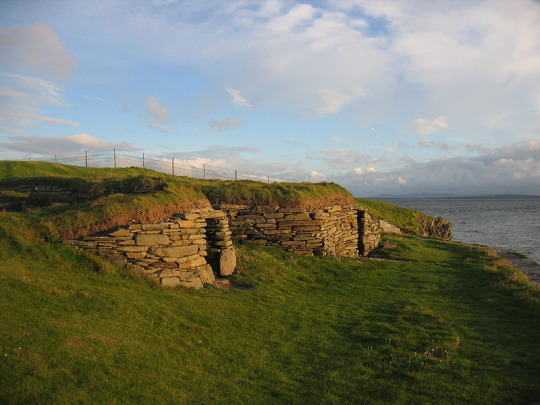
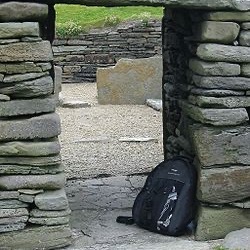
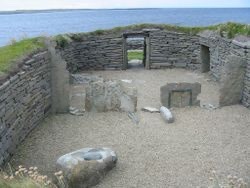
The Knap of Howar on the island of Papa Westray in Orkney, Scotland is a Neolithic farmstead which may be the oldest preserved stone house in northern Europe. Radiocarbon dating shows that it was occupied from 3700 BC to 2800 BC
They were constructed on an earlier midden, and were surrounded by midden material which has protected them. There are no windows; the structures were presumably lit by fire, with a hole in the roof to let out smoke. Though they now stand close to the shore, they would have originally lain inland.
The walls still stand to an eaves height of 1.6 metres (5 ft 3 in), and the stone furniture is intact giving a vivid impression of life in the house.
0 notes